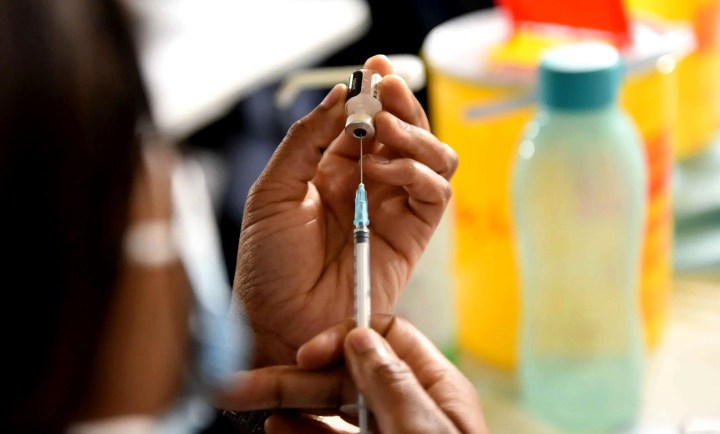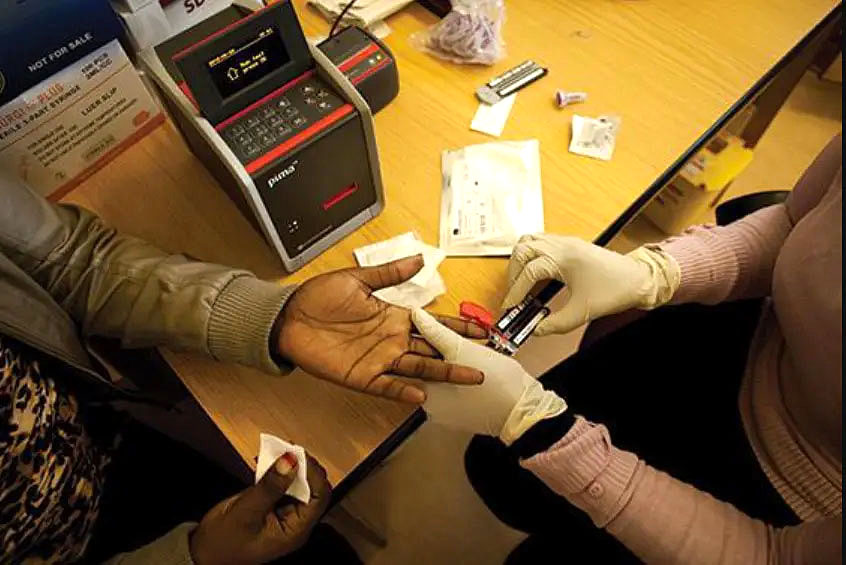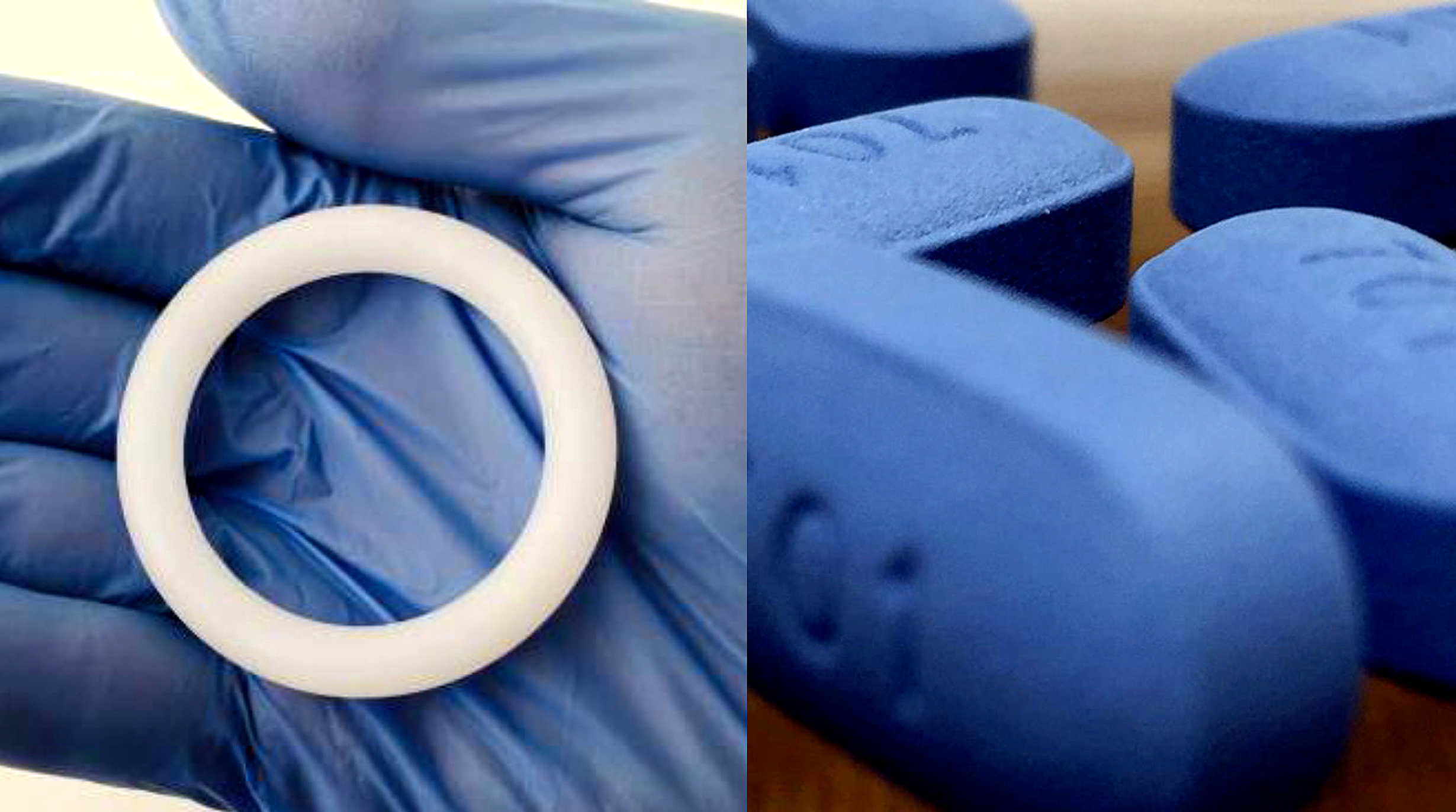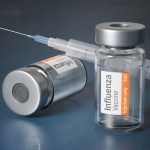SPOTLIGHT IN-DEPTH
Drug lowdown — how long-acting HIV treatments work

Researchers have been trying to develop antiretroviral medicines that can last weeks, months or even years per dose. Two such long-acting formulations have been approved in South Africa, but several more are on the horizon. Elri Voigt explores the science behind what makes a formulation long-acting and takes a look at some particularly exciting prospects.
It is thought that such long-acting therapies may eventually replace the daily pills taken by most people living with HIV today.
As pointed out by Dr Anushka Naidoo, a clinical pharmacologist and principal investigator and scientist at the Centre for the Aids Programme of Research in South Africa (Caprisa), three such long-acting HIV medicines have made it to market so far. They are the injectables cabotegravir (CAB-LA) and rilpivirine (RPV-LA) and the dapivirine vaginal ring (DPV-VR). Of these only CAB-LA (two-monthly) and DPV-VR (monthly) have been approved so far by the South African Health Products Regulatory Authority for HIV prevention. CAB-LA and RPV-LA have been approved for HIV treatment in the US, but not yet by South Africa.
CAB-LA and DPV-VR are being rolled out as HIV pre-exposure prophylaxis (PrEP) in pilot studies in South Africa. Spotlight had an update on these pilots here.
How do long-acting formulations work?
Dr Sindiswa Maphumulo, a specialist virologist and lecturer at the University of the Free State, tells Spotlight that designing long-acting formulations is a very complex and costly process. She explains that when designing any drug, whether it is long-acting or not, you need to look at two things – pharmacodynamics and pharmacokinetics. Pharmacokinetics refers to what the body does with the drug, and pharmacodynamics to what the drug does to the body.
“So, you’re going to have to know what is the human body going to do to this drug once you’ve administered it and also what is the drug targeting or aiming to do in the human body once it has been given,” she says. For long-acting drugs, studies need to determine what the half-life (how long it lasts in the body) of the drug is so the doses can be timed correctly. It is also essential that different populations are studied to determine how individual’s bodies react to the drug.
“You want to make sure that there is a steady release of that specific drug, which depends on the drug class that you’ve chosen, because we target different sites of HIV [with different drug classes],” she adds.
Naidoo says: “Long-acting drug delivery formulations enable slow drug release after administering a single dose over the course of days, weeks, months or even years, and can maintain a steady pharmacokinetics profile.

(Image: DOH)
“Think of pharmacokinetics as a drug’s journey through the body, during which it passes through four different phases: absorption, distribution, metabolism, and excretion. Pharmacokinetics is what the body does to a drug and refers to the movement of drug into, through and out of the body,” she says.
Naidoo says long-acting drugs are formulated so that they form a “depot” of the drug, either through the way the drug is released into the body or the way the device that contains the drug is designed to slowly release it over time. Several ways of achieving this have been investigated, including long-acting injectables, implants, infusion pumps and patches. Long-acting injections and implants, for example, are already widely used in South Africa as contraceptives.
For HIV this means that ARVs can either be stored in the body and slowly absorbed or be stored in a device that is placed in the body which releases consistent drug levels over time. For example, “long-acting injectables are usually the same medication that is taken in pill form but when injected they allow for the slow release of medication into the blood over a longer period,” says Naidoo.
How CAB-LA works
Maphumulo explains that CAB-LA and DPV-VR fall under different drug classes which target different stages of the HIV viral replication cycle in the body. Cabotegravir is an Integrase Strand Transfer Inhibitor (INSTI) – which means it targets the integrase enzyme that allows HIV to integrate itself into a cell’s DNA.
“Cabotegravir’s unique physiochemical and pharmacokinetic properties have permitted its formulation and delivery both as an oral tablet for daily administration and as a long-acting nanosuspension for monthly to quarterly intramuscular injection,” Naidoo says.
“Cabotegravir LA is made from the free acid form of cabotegravir, which has a low water solubility, a long systemic half-life and high antiviral potency,” says Emmanuella Chinonso Osuala, a research fellow and PhD student based at Caprisa.

In South Africa, two long-acting products for HIV prevention have been approved by the South African Health Products Regulatory Authority: CAB-LA (two-monthly) and DPV-VR (monthly). (Photo: Samantha Reinders / MSF / Spotlight)
She says the properties of this drug make it suitable for a so-called nanosuspension delivery system and allow for high levels of the drug to be contained in a small volume that can be given through an intramuscular injection. This is achieved by manufacturing cabotegravir, through a process called wet-bead milling, to form nanocrystals – about 200nm in size. These have a large surface which allows for “a slower and controlled release of the drug over time”.
“[The] drug is released from the injectable suspension over several months due to the slow dissolution of crystals from the suspension,” Osuala explains.
How DPV-VR works
Naidoo explains that DPV-VR is a ring made of “a flexible silicone polymer” and contains dapivirine, which is slowly released over a month and can be inserted and replaced by the women themselves each month. A three-month ring is also in development.
“The ring delivers dapivirine directly at the site of potential infection, with low systemic exposure (it acts at the site of action in the vagina and is not released in significant amounts into the blood circulation), which could minimise side-effects… and reduce the risk of developing HIV (drug) resistance,” she says.
Dapivirine, according to Maphumulo, is part of a drug class called non-nucleoside reverse transcriptase inhibitors, which block the reverse transcriptase enzyme on the HIV virus that allows for the transcription of HIV – an RNA virus – into DNA. This transcription would allow HIV to enter the human cell nucleus and replicate.
Making current treatments long-acting
While long-acting forms of cabotegravir and dapivirine are clearly useful, these are far from the most widely used ARVs. Most HIV treatment in South Africa today is with a combination of three drugs, with the key one being dolutegravir. Earlier this year we reported on how more than 4.7 million people in the country have started or switched to dolutegravir-based HIV treatment in the past five years.
One group of researchers is trying to develop long-acting formulations of these commonly used ARVs. Using so-called drug combination nanoparticles (DcNP) they have developed a long-acting formulation of the ARVs tenofovir, lamivudine and dolutegravir (LA-TLD) that shows some promise as a monthly injection. Early findings presented at this year’s International Aids Society conference in Australia and published in the journal AIDS, suggest that the formulation achieves sufficient drug concentrations in nonhuman primates to allow for monthly dosing.

Long-acting drugs are formulated so that they form a ‘depot’ of the drug, either through the way the drug is released into the body or the way device that contains the drug is designed to slowly release it over time. (Photo: IAVI)
Dr Rodney Ho, an expert in biomedical science and pharmacology based at the University of Washington in the US, and who led the research, tells Spotlight the study wanted to address a seemingly impossible question.
“Can we make three incompatible oral antivirals – tenofovir, lamivudine (which are water soluble) and dolutegravir (which is oil soluble and water-insoluble) – compatible and create a long-acting drug combination injectable product? With creativity and hard work, our team finally found a way to make this happen,” he says.
Read more in Daily Maverick: Why not enough people with HIV are on treatment and how a new court ruling could help
He explains that the three drugs were bound to lipid (fatty) nanoparticles using DcNP technology, which stabilises them so that the combination of drugs is not released at the injection site immediately. Instead, the drugs are taken up by the lymph and lymph nodes, allowing them to be metabolised in the cells, which host the HIV virus, before it is taken up in the bloodstream.
“As a result of this intentional design, LA-TLD has now provided data verifying that we are able to provide the necessary long-acting drug profile while achieving targeted drug exposure in cells and tissues of interest for an extended time,” Ho says.
“These results verified that a stable and scalable long-acting product, previously considered impossible, is now proven to be possible. This novel LA-TLD product can be administered via subcutaneous injection and will reach therapeutic drug levels within hours (not days which is needed for Cabenuva – LA-CAB and LA-RPV taken as HIV treatment). Thus, two-month oral leading doses may not be necessary,” he says.

The dapivirine vaginal ring is one of two long-acting PrEP products that have been approved for use in South Africa and is currently being rolled out in pilot projects across the country. (Photo: NIH Image Gallery / Spotlight)
Challenges of long-acting formulations
Osuala says there are several scientific challenges when it comes to long-acting formulations. This includes ensuring: the drugs remain stable when released over long periods; sustained drug release is maintained; and the biocompatibility of the materials used in the product. Other challenges include issues around drug potency, since the amount of drug required for the formulation depends on its potency; as well as the cost and access to the formulations, because it is expensive to develop and manufacture which may hinder the accessibility of these products in low- and middle-income countries.

Researchers appear to have found a way to make three widely used ARVs into a long-acting injectable formulation suitable for monthly dosing, based on results showcased at IAS 2023. (Photo: NIAID / Spotlight)
Then, according to Naidoo, there’s the added complication that if adverse events occur for long-acting injectables, “one cannot simply stop taking the medication like one can with daily pills” since the drug will continue to be released into the body. One way to reduce this risk is an oral lead-in period where the drugs to be injected, like cabotegravir and rilpivirine, are first taken in pill form for four weeks, which can be stopped if an adverse event like hypersensitivity, an allergy or a severe side-effect occurs.
Other challenges include the cold-chain storage requirements that some long-acting formulations and injections have, Naidoo says, “which can be challenging in [low- and middle-income countries] so formulations without cold chain needs are needed.
“The development of long-acting injectable formulations is a complex, time-consuming and costly process. One of the challenges… is the limited selection of ‘polymers’ and ‘excipients’ (materials used to formulate the long-acting injectables that are available). As a result, some innovator companies develop proprietary excipients for use in long-acting injectable formulations, which can delay the development of generic long-acting injectable products.” DM
This article was produced by Spotlight – in-depth, public interest health journalism.


















 Become an Insider
Become an Insider
Comments - Please login in order to comment.